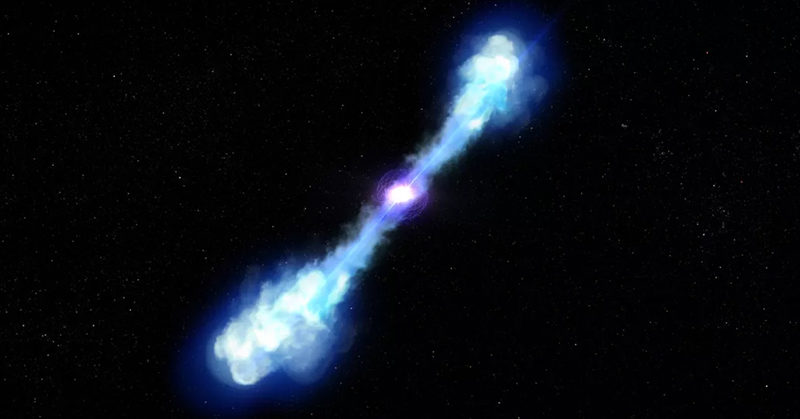In May 2020, NASA scientists spotted a flash so bright that they could hardly explain how it happened. So what was this blindingly bright flash of light? Oh, just the collision of two neutron stars forming what is called a magnetar, also known as a Kilonova. (1)
The Great Kilonova
In May of this year, NASA’s Neil Gehrels Swift Observatory detected light from a bright flash. What was that light? A kilonova: Light from a flash caused by an incredible burst of gamma rays that release more energy in a half-second than the sun will produce over its 10-billion-year lifespan. (1)
This is the merger of two neutron stars that actually happened a very, very long time ago, but that light only reached Earth now. This merger produced a magnetar with an extremely powerful magnetic field. This brightened the material that was ejected from the explosion. (1)
According to NASA, a kilonova is:
“An optical and infrared glow from the radioactive decay of heavy elements and are unique to the merger of two neutron stars, or the merger of a neutron star with a small black hole.” (1)

Credits: NASA, ESA, and D. Player (STScI)
A Kilonova That Baffled Astronomers
Based on x-ray and radio observations, astronomers were expecting a certain amount of brightness from this event. What they saw in Hubble, however, completely blew their expectations out of the water. (1)
The infrared emissions from this Kilonova were 10 times brighter than they predicted.
“These observations do not fit traditional explanations for short gamma-ray bursts,” said study leader Wen-fai Fong of Northwestern University in Evanston, Illinois. “Given what we know about the radio and X-rays from this blast, it just doesn’t match up. The near-infrared emission that we’re finding with Hubble is way too bright. In terms of trying to fit the puzzle pieces of this gamma-ray burst together, one puzzle piece is not fitting correctly.” (1)
Thanks to Hubble, they were able to see and study this event, which will help them learn more about what the universe is capable of. This gamma-ray burst, in particular, was a rare instance in which the scientists were actually able to detect light across the entire electromagnetic spectrum. (1)
This Kilonova’s peak brightness reached 10,000 times brighter than a classical nova. (1)
“As we got the Hubble observations, we had to completely change our thought process, because the information that Hubble added made us realize that we had to discard our conventional thinking, and that there was a new phenomenon going on. Then we had to figure out what that meant for the physics behind these extremely energetic explosions.” explained the study’s co-investigator, Tanmoy Laskar of the University of Bath in the United Kingdom. (1)
What This Means for the Future
If the scientists’ theory that this kilonova is the instance of two neutron stars merging to form a magnetar, then they expect the ejecta from the burst to produce light that will show up on radio wavelengths within a few years. (1)
Though Hubble did a remarkable job detecting and observing this kilonova, NASA’s up-and-coming James Webb Telescope will be even better. (1)
“Webb will completely revolutionize the study of similar events,” said Edo Berger of Harvard University in Cambridge, Massachusetts, and principal investigator of the Hubble program. “With its incredible infrared sensitivity, it will not only detect such emission at even larger distances, but it will also provide detailed spectroscopic information that will resolve the nature of the infrared emission.” (1)
This observation shows us one thing: The future of space study is a bright one.
Keep Reading: NASA Makes History After Landing On Asteroid To Collect Rock Samples

